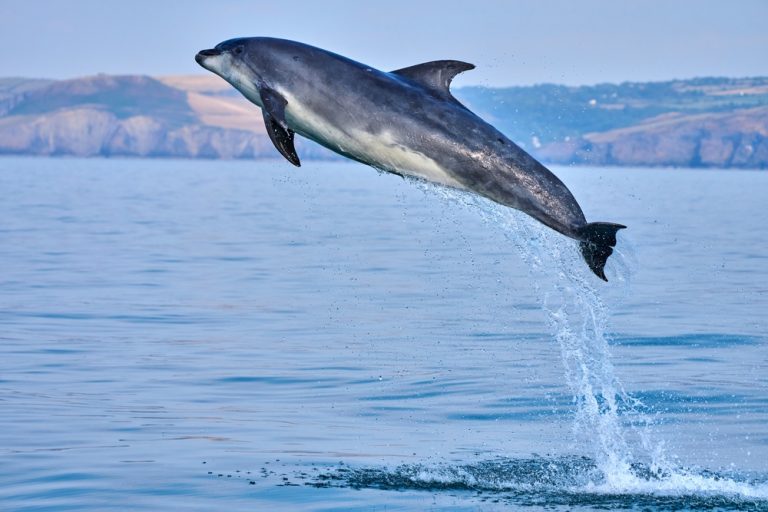How do bottlenose dolphins reproduce?
Bottlenose dolphins are fairly sociable animals with fascinating levels of intelligence. One of the most notable areas of this intelligence is the behaviours they portray during reproduction. These animals reproduce through intercourse and have complex structural organisation during mating.
Although mating occurs throughout the year, it tends to rise during the autumn and spring, which are also the best periods for dolphin boat trips in Cardigan Bay. Stay with us as we answer the question, how do bottlenose dolphins reproduce?
When and how do bottlenose dolphins reproduce?
Dolphins mate during the warmer months, summer and spring. During colder months, they migrate to warmer areas to reproduce. Female bottlenose dolphins reach the siring age quite early compared to males. Males attain sexual maturity after 10 to 14 years, while females start ovulation from 8 to 13.
Female dolphins don’t have a specific heat cycle. As a matter of fact, they can have three to seven ovulations within a year. Currently, there are no indications of female bottlenose dolphins reaching menopause, as they’ve been observed giving birth and raising calves even past 48 years of age.
How long is the bottlenose dolphin gestation period?
Calves begin to develop in the mother’s womb after fertilisation. They’re connected by an umbilical cord and surrounded by a placenta in the womb. They have a gestation period of a year and may sometimes migrate to warmer areas as labour draws nearer to boost the chances of survival of their offspring. Also, like most other pregnant mammals, bottlenose dolphins feed a lot during pregnancy to properly nourish their foetus.
How do dolphins give birth?
Unlike other mammals, dolphins come out of the womb with their tail first, then the rest of the body. The umbilical cord breaks soon after they leave the womb, and the mother helps the offspring rise to the water surface to have their first breath. The process takes an average of thirty minutes to an hour.
Mothers lose a lot of blood in the birth process, exposing them to predation. Luckily, dolphins practise an attended birth where other pod members surround her during labour to protect her and the young one. Moreover, few dolphins may draw much nearer to the mother during birth to ascertain her excellent condition.
In most cases, a dolphin only gives birth to one offspring, and finding one with twin calves or more at a time is infrequent. A newly born calf is about one to one-and-half metres long, with a maximum weight of 40kgs.
How long do dolphin calves remain under their mother’s care?
Dolphins are mammals, so they breastfeed their calves after birth. The calves undergo a lactation period of between one and two years. After the lactation period, they remain with their mothers for four to six years as they learn to live and feed independently. On dolphin spotting boat trips, you can see mothers swim across the water with their calves— such a fulfilling experience.
What is the best time of the day to see dolphins?
Though you can see bottlenose dolphins all year round, the summer months between June and September are the best dolphin viewing. They are more active in the morning hours between 10 am and noon and in the afternoon till dawn. Newquay is the prime spot for a lovely view as it is their hotspot harbour in summer.
A fun Cardigan Bay dolphin trip early in the morning or afternoon is your best chance of watching the dolphins at a close range and enjoying their engaging presence. Experience and learn more about the life of bottlenose dolphins through entertaining Cardigan Bay boat trips. Contact us today to book a boat ride and be a part of the enlightening adventure. If you have more questions like ‘how do bottlenose dolphins reproduce?’, we’re more than happy to answer them.





